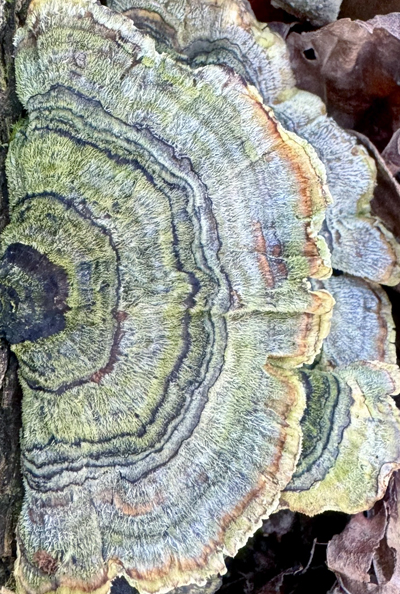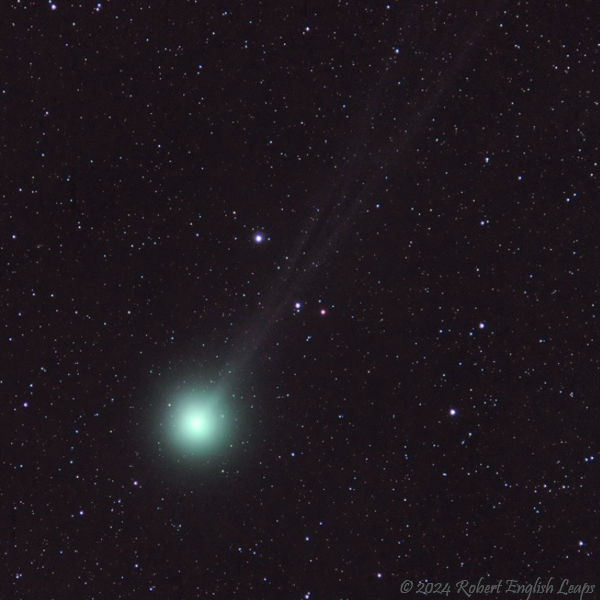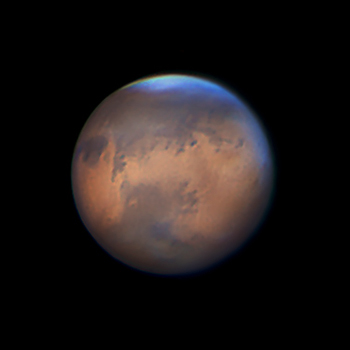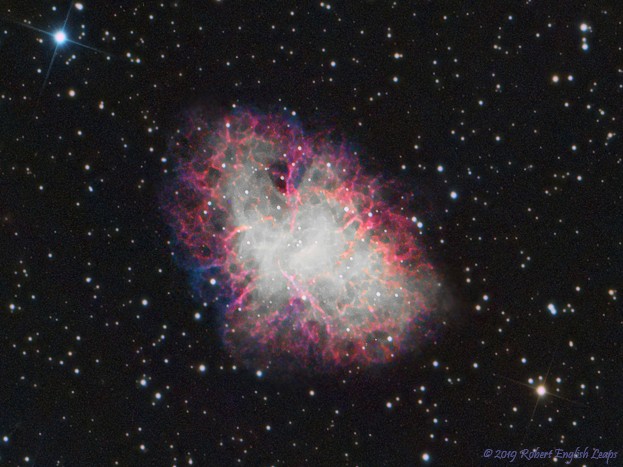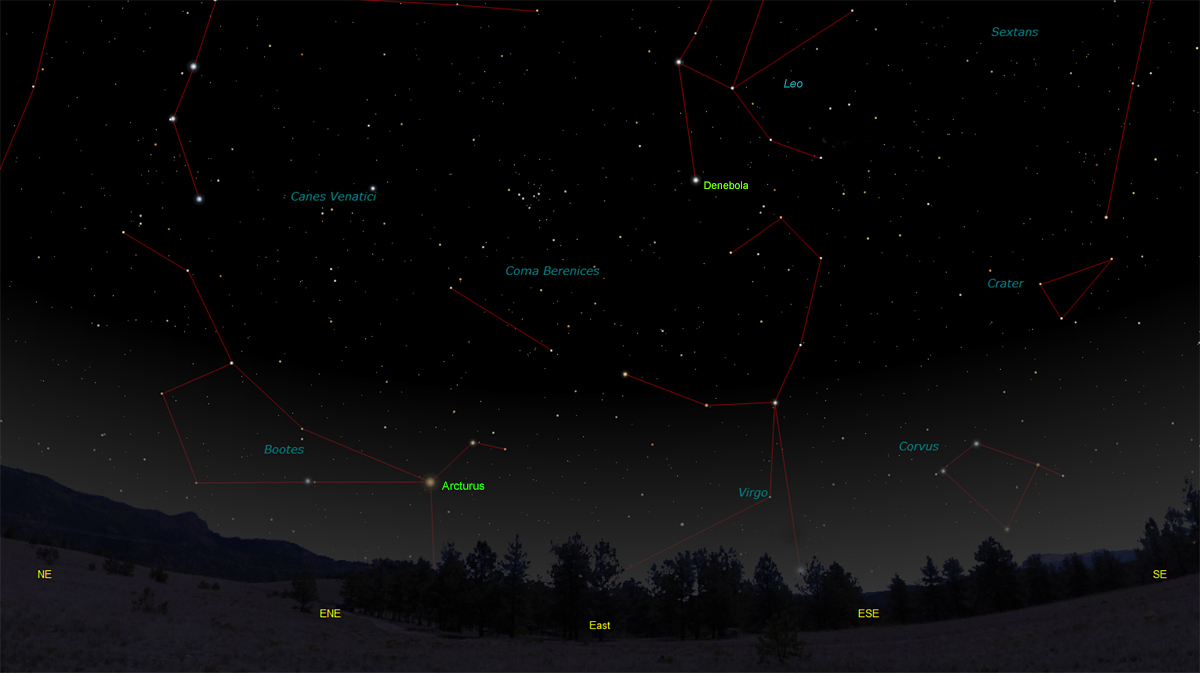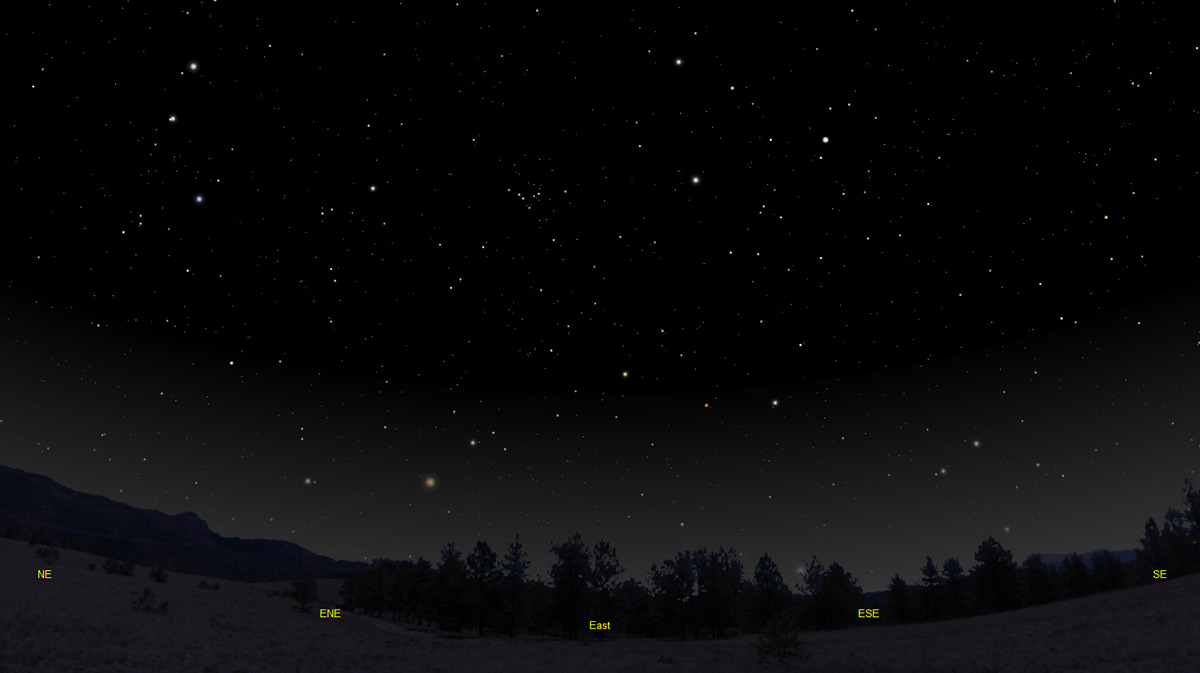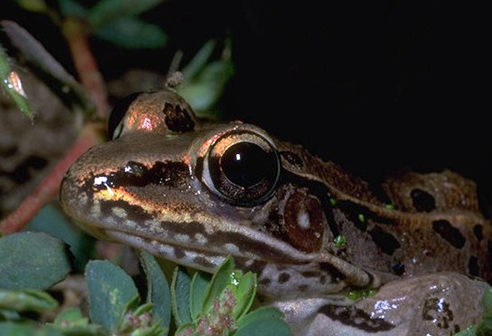The purpose of this feature is to give scout leaders, educators and naturalists an idea of some of the natural events coming up each month. We will try to cover a variety of natural events ranging from sky events to calling periods of amphibians, bird and mammal watching tips, prominent wildflowers and anything else that comes to mind. We will also note prominent constellations appearing over the eastern horizon at mid-evening each month for our area for those who would like to learn the constellations. If you have suggestions for other types of natural information you would like to see added to this calendar, let us know! Though we link book references to nationwide sources, we encourage you to support your local book store whenever possible.
Notes From February 2024
February is a season of subtle change. At the beginning of the month the colors you see walking through the woods are muted, like the pastels in the Turkeytail shelf fungi at right. The scientific name of the Turkeytail is Coriolus versicolor. It lives up to its species name, showing an amazing variety of hues. The forest colors range from the grey-browns of dormant deciduous trees to the cool greens of conifers and hollies, and at higher elevations, Mountain Laurel and Rhododendron. A few Beeches and Eastern Hop-hornbeams hold on to the previous season's leaves and add a few warmer colors. John Burroughs said that one secret of success in observing nature is a capacity to take a hint. As February goes by there are hints of the coming spring everywhere. It seems fitting that one of the earliest native spring wildflowers we see is the Harbinger-of-Spring, also called Pepper and Salt. We spotted a flower just above the leaves on Valentine's Day. It's always nice to hear the first Upland Chorus Frogs and Spring Peepers call from wet areas on the milder days. They are soon joined by Southern Leopard Frogs, Pickerel Frogs and American Toads. Crawfish frogs give their snoring calls from ponds and wetlands in West Tennessee. By the end of the month small clusters of red flowers appear on the Red Maples, adding another tint to the landscape. Some winter residents are northward bound. On the 22nd, a large flock of Sandhill Cranes flew over the house at Cloudland. A Ring-necked Duck was present on the pond next to the house on February 26th. There are still American Pipits in the fields and the winter sparrows will stay on for a while before heading north. Pine Warblers sing from the Virginia Pines around the house most mornings. My Eastern Phoebes are checking out the nest in the shed where they have nested for the last five years. Each year the nest gets a little bit of a makeover, and they are already getting started. February seems to be about new beginnings. .Sky Events for March 2024: Wow, there are a lot of things going on in the sky this month! Hopefully we will get some clear skies soon! Spring begins for the Northern Hemisphere on the Equinox , which occurs on March 19th at 11:06pm Eastern Daylight Time.
The bright star Antares in Scorpius is occulted by the third quarter Moon in the early morning hours of March 3rd. A penumbral eclipse of the Moon occurs in the early morning hours of March 25th. Penumbral eclipses are not as spectacular as total lunar eclipses, but you should definitely see a darkening of one limb of the Moon. Evening Sky: Jupiter remains in Aries this month. At the beginning of the month look for it at dusk in the south southwest, about 40 degrees above the horizon. It will be the brightest star-like object in the sky in the early evening. Over two-thirds of the combined mass of all the solar system's planets is in your field of view when you aim your telescope at Jupiter. You will want to begin right at dusk to get the best conditions to view Jupiter. There's a lot to see. Even with just a good pair of binoculars you can see Jupiter appears as a small disk rather than a star-like point. You can often see one or more of the four Galilean moons. A six-inch aperture telescope will show the Great Red Spot, a long-lasting storm in Jupiter's clouds shown in the image at right, and some of the belts, though those are of lower contrast visually than they appear in images. The planet rotates in just under 10 hours, so in a single night you can watch the Great Red Spot rotate from one side of the planet to the other. You can use Jupiter to guide you to Uranus, which is a little over a typical binocular field above Jupiter, and forms a small triangle with two stars (Botein and epsilon Aries). You can confirm your identification by watching Uranus slowly move with reference to these two stars over the coarse of the month. An app like Sky Safari will make it easier to find the planet.
Mercury
has a very nice apparition in the evening sky this month, the best of
2024. It reaches greatest elongation from the Sun on March 24th, when it
will be 19 degrees east of the Sun. This is a great time to spot the
innermost planet. As always with Mercury, you will want a low western
horizon to see it. A pair of binoculars will help locate it in a bright
sky, though as the sky darkens it will be easily visible with the naked
eye. Morning Sky:: Venus sinks lower towards the south southeast horizon as the month goes on. Mars can be located easily by first centering bright Venus in binoculars, then looking up and to the left of Venus. At the beginning of the month the two planets will be in the same binocular field of view. The distance between the two planets will slowly increase each morning as Venus drops lower to the horizon and Mars rises higher. You will probably be able to see the reddish tint of the planet in binoculars.
The views below show the sky looking east at 10:00 p.m. EDT on March 15. The first view shows the sky with the constellation outlines and names depicted. Star and planet names are in green. Constellation names are in blue. The second view shows the same scene without labels. The bright star Arcturus, in Bootes, the Herdsman, makes its appearance this month in the early evening sky, a sure sign that Spring is here. Virgo clears the horizon this month along with Corvus, the Crow. The area of sky encompassing Leo, Virgo and Como Berenices marks the heart of the great Virgo cluster of galaxies. In the early morning hours Virgo will have risen high enough in the sky to search for the many bright galaxies that are in this region. Messier 104, in southern Virgo just above Corvus, is one of the easier galaxies to spot in binoculars. A line of faint stars above Corvus the Crow points to it. Even so, you will need a dark and moonless night to be successful. It will not look like it does in long exposure photographs. It will appear as a small faint colorless blur.Messier 1, The Crab Nebula, is high in the sky this month and can sometimes be spotted in binoculars in a location away from city lights. In larger telescopes you can visually make out the part of the nebula that appears whitish in the above image. To me it looks to me like a giant rabbit grazing in some cosmic field of grass. The faint red and blue tendrils are visible only large telescopes in very dark skies. The Crab Nebula is the remnant of a stellar explosion that was noted by Chinese astronomers in the year 1054. The star collapsed to a rapidly spinning neutron star, and pulsar. It spins at a rate of 30 revolutions per second. Distance to the nebula is 6,500 light-years from Earth. For more on the crab nebula, including finder charts and a great interview with pulsar discoverer Jocelyn Bell Burnell, click here. The object is number one in 18th century French comet hunter Charles Messier's catalog of objects which might be confused with comets. In describing the appearance of the crab nebula, Messier said, "This nebula had such a resemblance to a comet, in its form and brightness, that I endeavored to find others, so that astronomers would not confuse these same nebulae with comets just beginning to shine." Messier ending up cataloging some of the most beautiful galaxies, nebulae and star clusters in the sky. On Learning the Constellations: We advise learning a few constellations each month, and then following them through the seasons. Once you associate a particular constellation coming over the eastern horizon at a certain time of year, you may start thinking about it like an old friend, looking forward to its arrival each season. The stars in the evening scene above, for instance, will always be in the same place relative to the horizon at the same time and date each March. Of course, the planets do move slowly through the constellations, but with practice you will learn to identify them from their appearance. In particular, learn the brightest stars (Like Arcturus and Denebola in the above scene looking east), for they will guide you to the fainter stars. Once you can locate the more prominent constellations, you can "branch out" to other constellations around them. It may take you a little while to get a sense of scale, to translate what you see on the computer screen or what you see on the page of a book to what you see in the sky. Look for patterns, like the stars of Corvus the Crow. The earth's rotation causes the constellations to appear to move across the sky just as the sun and the moon appear to do. If you go outside earlier than the time shown on the charts, the constellations will be lower to the eastern horizon. If you observe later, they will have climbed higher. As each season progresses, the earth's motion around the sun causes the constellations to appear a little farther towards the west each night for any given time of night. The westward motion of the constellations is equivalent to two hours per month. Recommended: Sky & Telescope's Pocket Star Atlas is beautiful, compact star atlas. A good book to learn the constellations is Patterns in the Sky, by Hewitt-White. For sky watching tips, an inexpensive good guide is Secrets of Stargazing, by Becky Ramotowski.
A good general reference book on astronomy is the Peterson
Field Guide,
A Field Guide to the Stars and Planets, by Pasachoff. The book retails for around $14.00.
The Virtual Moon Atlas is a terrific way to learn the surface features of the Moon. And it's free software. You can download the Virtual Moon Atlas here. Apps: The Sky Safari 6 basic version is free and a great aid for the beginning stargazer. I really love the Sky Safari 6 Pro. Both are available for iOS and Android operating systems. There are three versions. The Pro is simply the best astronomy app I've ever seen. The description of the Pro version reads, "includes over 100 million stars, 3 million galaxies down to 18th magnitude, and 750,000 solar system objects; including every comet and asteroid ever discovered." You may also want to try the very beautiful app Sky Guide. Though not as data intensive as Sky Safari, Sky Guide goes all out to show the sheer beauty of the night sky. Great for locating the planets.
Amphibians:
Recommended: The Frogs and Toads of North America, Lang Elliott, Houghton Mifflin Co.
Archives (Remember to use the back button on your browser, NOT the back button on the web page!) Natural Calendar February 2024 Natural Calendar December 2023 Natural Calendar November 2023 Natural Calendar September 2023 Natural Calendar February 2023 Natural Calendar September 2022 Natural Calendar February 2022 Natural Calendar December 2021 Natural Calendar November 2021 Natural Calendar September 2021 Natural Calendar February 2021 Natural Calendar December 2020 Natural Calendar November 2020 Natural Calendar September 2020 Natural Calendar February 2020 Natural Calendar December 2019 Natural Calendar November 2019 Natural Calendar September 2019 Natural Calendar February 2019 Natural Calendar December 2018
Natural Calendar February 2018 Natural Calendar December 2017 Natural Calendar November 2017 Natural Calendar October 2017Natural Calendar September 2017 Natural Calendar February 2017 Natural Calendar December 2016 Natural Calendar November 2016 Natural Calendar September 2016Natural Calendar February 2016 Natural Calendar December 2015 Natural Calendar November 2015 Natural Calendar September 2015 Natural Calendar November 2014 Natural Calendar September 2014 Natural Calendar September 2013 Natural Calendar December 2012 Natural Calendar November 2012 Natural Calendar September 2012 Natural Calendar February 2012 Natural Calendar December 2011 Natural Calendar November 2011 Natural Calendar September 2011 Natural Calendar December 2010 Natural Calendar November 2010 Natural Calendar September 2010 Natural Calendar February 2010 Natural Calendar December 2009 Natural Calendar November 2009 Natural Calendar September 2009 Natural Calendar February 2009 Natural Calendar December 2008 Natural Calendar November 2008 Natural Calendar September 2008 Natural Calendar February 2008 Natural Calendar December 2007 Natural Calendar November 2007 Natural Calendar September 2007 Natural Calendar February 2007 Natural Calendar December 2006 Natural Calendar November 2006 Natural Calendar September 2006 Natural Calendar February 2006
Natural Calendar December 2005
Natural Calendar November 2005
Natural Calendar September 2005
Natural Calendar February 2005
Natural Calendar December 2004
Natural Calendar November 2004
Natural Calendar September 2004
Natural Calendar February 2004
Natural Calendar December 2003
Natural Calendar November 2003 Natural Calendar February 2003 Natural Calendar December 2002 Natural Calendar November 2002 Nature Notes Archives: Nature Notes was a page we published in 2001 and 2002 containing our observations about everything from the northern lights display of November 2001 to frog and salamander egg masses. Night scenes prepared with The Sky Professional from Software Bisque All images and recordings © 2024 Leaps
|
|
